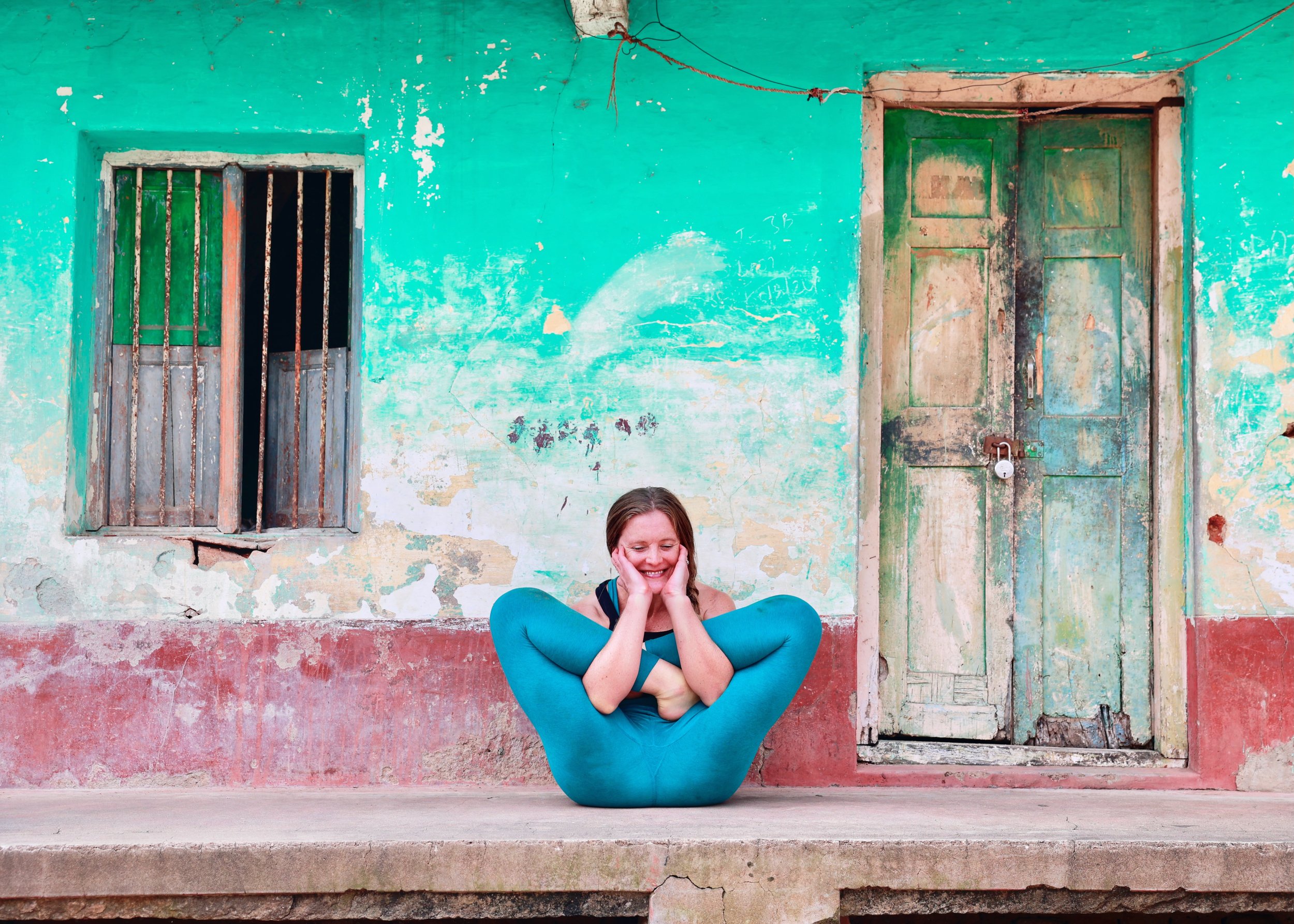Survivors
Healing through Radical Forgiveness
Restorative Meditation for Sexual Assault Awareness Month (SAAM) with Sandi Higgins
Saturday, April 26th
Online via Zoom
USA (EST): 9:00 AM | India (IST): 6:30 PM | Europe (CEST): 3:00 PM
Security Fee: 5 USD | about 430 INR | about 4.5 EUROS
Join Aquamarine Yoga founder Sandi Higgins for a guided meditation session in celebration of Sexual Assault Awareness Month as we come together to heal with love and freedom.
Forgiveness isn’t about excusing violence and harm, but about releasing the pain and resentment that keep us imprisoned by the past. It's about moving from victim to victor — transforming trauma into an invitation for spiritual awakening.
Session includes optional movement and light visualization.
Sign Up in 2 Steps!
1. Pay Security Fee Here
2. Register for Zoom Link Here (registration confirmed once security fee is received)
What is Radical Forgiveness?
"Radical" emphasizes that the act of forgiveness isn’t just a surface-level gesture but a fundamental shift in how we perceive and respond to harm. It's about moving from holding on to pain and resentment to embracing healing and compassion, even in the face of deep hurt. This kind of forgiveness often involves reframing our trauma as an opportunity for spiritual growth.
In the context of trauma, especially in cases of sexual assault, forgiveness can feel almost impossible. "Radical forgiveness" speaks to the idea of forgiving not just small wrongdoings, but the most difficult of offenses, even when the harm done feels unhealable. It's about choosing liberation and peace over being trapped in anger or victimhood.
"Radical" implies that forgiveness is an empowering choice, rather than something that is expected or socially imposed. It’s about reclaiming your power and freedom. You aren’t forgiving because you’re supposed to, but because you choose to for your own healing and peace.
Radical forgiveness involves developing compassion for the person who harmed us, not in a way that condones their actions but in a way that acknowledges our shared humanity and the possibility for growth and transformation, both for the survivor and the one who caused harm. It's about healing ourselves first, regardless of the actions of others.
About Sexual Assault Awareness Month (SAAM)
“Everyone in our communities deserves to live in safe and supportive environments where they are treated with respect. When our workplaces, schools, and communities work together to uphold safety and respect, we make progress in preventing sexual abuse, assault, and harassment.
As long as there have been people who care about making the world a better place, there have been individuals advocating for sexual assault prevention. In the United States, movements for social change and equality began to gain traction in the 1940s and 50s with the civil rights era.
Wide social activism around the issue of sexual assault continued into the 1970s, bringing with it support for survivors and heightened awareness. The first rape crisis center was founded in San Francisco in 1971, the same city where the first U.S. Take Back the Night event was held seven years later. The following decades mobilized survivors and advocates to call for legislation and funding that would support survivors, such as the Violence Against Women Act of 1993 (VAWA).
In an effort to further coordinate awareness and prevention efforts, in 2000, the newly launched National Sexual Violence Resource Center and the Resource Sharing Project polled sexual violence coalitions. They asked organizations about their preferred color, symbol, and month for sexual assault awareness activities. The results showed that those in the movement preferred a teal ribbon as a symbol for sexual assault awareness, and SAAM as we know it was born.”
Survivors, if your life was forever changed by sexual violence, you are not alone and it is not your fault. You deserve support. Family, friends, colleagues, and community often do not know how to support you and this can compound your trauma and intensify your suffering. There are other survivors and organizations who can be more helpful at this time! See below for a list of resourceful organizations.
Family, friends, colleagues, and community of survivors, if someone you love has been affected by sexual violence, you can also get support for supporting them. Educating oneself is a compassionate step. See below for a list of resourceful organizations.

Resourceful organizations for Survivor SUPPORT
Me Too (Resources, Sanctuary, Training)
National Sexual Violence Resource Center - NSVRC
www.nsvrc.orgRape, Abuse & Incest National Network - RAINN
www.rainn.orgBetter Help (Online Therapy)
www.betterhelp.comTake Back The Night Foundation (Resources, Events, Hotline, Expression)
No More (Learning, Action, Resources, Global Directory)
National Domestic Violence Hotline
www.thehotline.orgSurvivors Network of those Abused by Priests - SNAP
www.snapnetwork.org1in6 (Male Survivors)
www.1in6.orgPromoting Awareness, Victim Empowerment - PAVE
www.pavingtheway.netHelping Survivors
If you are local to Sarasota County, Florida:
Safe Place and Rape Crisis Center - SPARCC
If you are traveling internationally:
Handbook of International Centers for Survivors - PDF
Additionally:
Aquamarine Yoga founder Sandi Higgins is a survivor of sexual violence. Having experienced the benefits of yoga in her own healing journey, she became a yoga teacher and strives to support other survivors through education in the holistic practices of yoga, meditation, and contemplative creativity. Having journeyed this healing path and its many challenges, Sandi creates a safe and relatable environment where individuals can listen to their bodies and minds and reconnect with their hearts, voices, and dreams while utilizing the tools and gifts of yoga practice to return to wholeness. Mindful movement and breathing help to cultivate inner strength, peace, and resilience. Meditation develops self-compassion. Chanting invites emotional transformation and integration. Additionally, contemplative creativity offers an expressive outlet for survivors to reflect and process experiences and restore self-worth. In these ways, Aquamarine Yoga aims to empower survivors to reclaim their inner-peace, creativity, and pleasure, while rebuilding their lives with renewed confidence and purpose.
As yoga practitioners and especially as teachers, it is a necessity of our times to talk about healing sexual violence.
Our microcosmic spiritual communities and our macrocosmic societies are being repeatedly shaken by reckonings of sexual violence, as manifested in the #metoo movement - from Yoga to Buddhism to Catholicism, Hollywood to Mollywood to Nollywood, etc. - and the myriad sufferings of this public health crisis all over the world.
Rape “culture” is more like a cultural coma from which we are all awakening.
Fortunately, yoga practice can be a powerful tool for healing in this process. Unfortunately, it can also be a tool for harm.
Many of us became yoga teachers because we found personal healing from trauma, including the trauma of sexual violence, through our yoga practice. From this vantage point, it seems paradoxical that similar trauma has been perpetuated in the practice of yoga. However, it is also yoga practice to acknowledge both sides of the spectrum.
While deeply respecting the potent yogic traditions that have helped to shape our own healing trajectories, we must also confront the harm that has existed within our yoga lineages (ie. Bikram Yoga and its derivatives in Hot Yoga styles, Kundalini Yoga, Ashtanga Yoga and its derivatives in Flow, Vinyasa, Jivamukti, and Power Yoga styles, Iyengar Yoga, etc).
This integration is vital for contributing to social transformation, to the collective creation of a culture of consent where survivors feel seen, heard, and integrated, and where further sexual violence can be prevented and sexual health can be restored.
Further Reading: Karen Rain & Jubilee Cooke, Yoga International: “How To Respond To Sexual Abuse Within A Yoga or Spiritual Community”
Integration is an ongoing process.
By cultivating compassionate environments that recognize the shadows of our aspirations, we can create safer spaces for open dialogue about the complexities of each other’s experiences. Compassion is the conscious effort to end suffering; it is not necessarily a shared position. Shadow work may look different for everyone, and we must hold space without spite for various approaches to integration.
By listening to what is difficult to hear, by recognizing our attachments and aversions, we can realize a greater perspective. This requires moving beyond the “I’m right, you’re wrong” mentality and allowing for differences in how we address this public health crisis - a crisis that is still very uncomfortable for many people to discuss. As yogis, we can help transform the discomfort of this conversation, like a complex asana, through the cultivation of steadiness and ease in our thinking and communicating. Therefore, we need to practice thinking and communicating about sexual violence and sexual non-violence; we need to be educating ourselves and each other.
Fostering a culture of togetherness, rather than a culture of division and isolation, is essential for meaningful progress. Without denying or demonizing the controversial behavior of yoga gurus, teachers, and students, we need to honor the potential of both help and harm that can coexist within all systems and communities.
Together we can embrace the full spectrum of yoga’s potential to contribute to healing a global pandemic of sexual violence and awakening from this nightmarish coma of rape “culture” by prioritizing inclusive conversations, meaningful actions, and ongoing education.
- Sandi H.
Founder, Aquamarine Yoga
Further Reading: American Sexual Health Association “What Is Sexual Health?”






